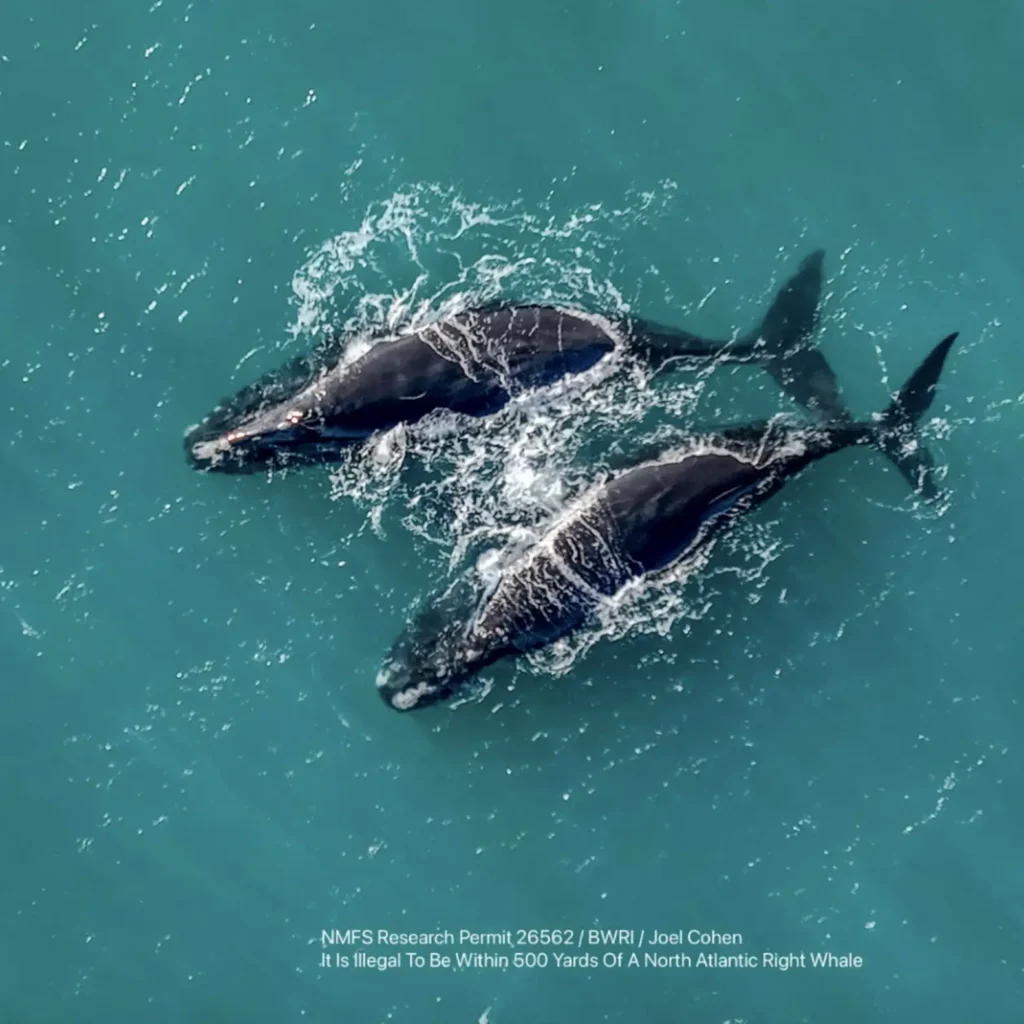“That moment for me was breathtaking, and I couldn’t fully gather myself.”
A Rare Journey: Endangered Right Whales Make Unprecedented Appearance in Gulf Waters
Last month, beachgoers and boaters along Florida’s Panhandle were treated to a once-in-a-lifetime sight: two rare and majestic figures gliding just off the coast. With only an estimated 370 individuals remaining, every sighting of North Atlantic right whales is an extraordinary event.
This time, it was Koala and Curlew, a pair of adult female right whales, who captured hearts and headlines.
“These sightings are truly remarkable,” said Matt Devitt of WINK News, who shared the news on Facebook. “This is something you may never see again.”
Once nearly driven to extinction by commercial whaling, North Atlantic right whales are now one of the most endangered whale species on the planet. What makes Koala and Curlew’s appearance even more incredible is that they’re both females—and among the mere 70 left who are capable of reproducing.

Researchers believe that Curlew may be pregnant, although a calf has yet to be seen. Their long, meandering journey has amazed marine biologists, especially since it’s rare for two adult females to travel together.
“The fact that they’re still side by side is fascinating,” said Julie Albert of the Blue World Research Institute.
According to NOAA Fisheries, Koala and Curlew have been on the move since late last year. Starting in the Southeast U.S. calving grounds in November, they’ve traveled over 2,000 miles, passing Cape Canaveral in January, looping around the Florida peninsula into the Gulf of Mexico by February, and then reaching all the way to The Bahamas—a region with no recorded sightings of right whales until now.
“There are no recorded sightings of right whales in The Bahamas,” confirmed marine mammal scientist Philip Hamilton. “What inspired them to make this journey will likely remain a mystery.”
Even seasoned professionals were left speechless. Captain Isaac Ellis, of Neal Watson’s Bimini Scuba Center, described his encounter with the whales as surreal:
“That moment for me was breathtaking. I thought it was fake at first.”
While the reason behind their strange route may be unknown, their presence is a reminder of how fragile and special these creatures are. NOAA Fisheries urges anyone along the coast to stay alert. If you spot a right whale, report it by calling 877-WHALE-HELP, and be sure to record the time and location. Photos and videos are welcome, but always keep a respectful 500-yard distance from the whales.
North Atlantic right whales are identifiable by their glossy black skin, robust bodies, flat backs, and wide flippers—along with the unique callosity patterns on their heads.
With care and vigilance from those who share the coastline, Koala and Curlew may continue their mysterious journey in safety—and perhaps even add new life to their critically endangered species.
